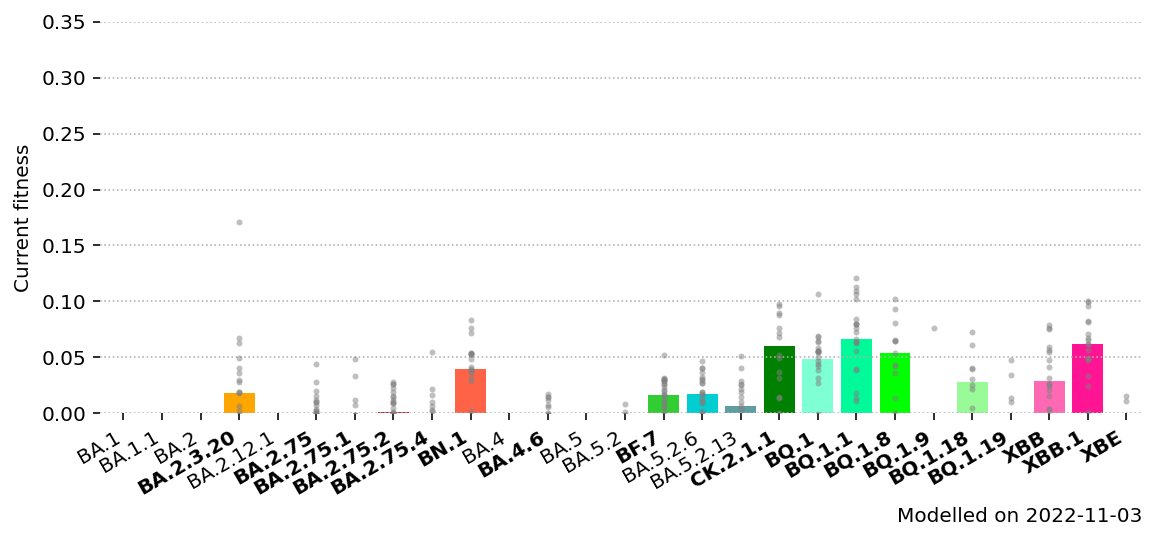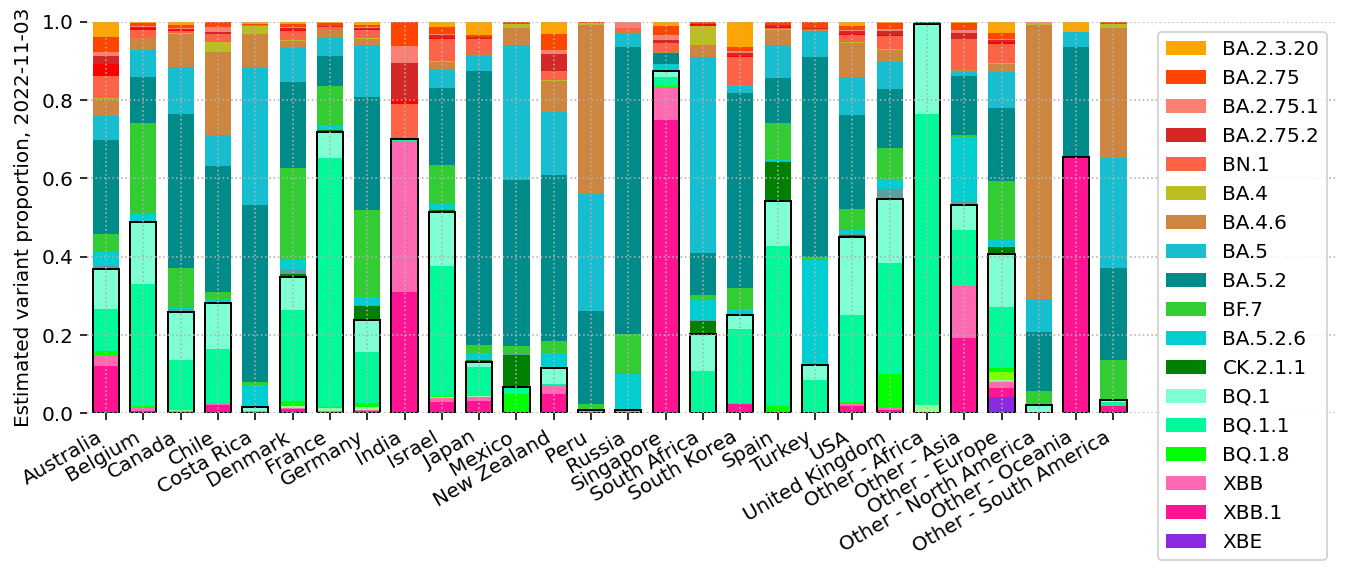Thread by Moritz Gerstung
Thread
A brief update on global SARS-CoV-2 variants:
* BQ.1.1 spreads, albeit at the low end of expectations
* XBB* and BQ* lineages are the most widespread
* Further new variants have been defined, including CK.2.1.1 leading to complex patterns
* BQ.1.1 spreads, albeit at the low end of expectations
* XBB* and BQ* lineages are the most widespread
* Further new variants have been defined, including CK.2.1.1 leading to complex patterns
While the initial estimates of BQ.1.1's growth advantage to BA.5 were between 10-15%, the estimate has come down to ~10% more recently.
As other more transmissible variants such as BF.7 have also spread the current fitness is lower, around 6-7%.
As other more transmissible variants such as BF.7 have also spread the current fitness is lower, around 6-7%.
CK.2.1.1 came a bit out of the blue but is also contributing a measurable share of cases in countries such as Spain (~9%) and Germany (~3%).
It spreads at a similar rate as BQ.1, which it also matches in terms of key RBD mutations as shown below
It spreads at a similar rate as BQ.1, which it also matches in terms of key RBD mutations as shown below
The current prevalence of these variants varies by country with XBB* more prevalent in Asia, BQ.1* in Africa, Europe and North America and both being infrequent in South America.
France has one of the highest BQ.1.1 shares, but its growth advantage came down to ~9% over BA.5.
France has one of the highest BQ.1.1 shares, but its growth advantage came down to ~9% over BA.5.
Overall it appears that Europe's September wave (largely BA.5 and BA.5.2) also caused the number of BQ.1* and other variant cases to slow or stall.
A tempting, but unproven, explanation would be that the extra immunity also enables to partially contain BQ.1* and other variants.
A tempting, but unproven, explanation would be that the extra immunity also enables to partially contain BQ.1* and other variants.
The dynamics of the next months are a complex mix of variants, immunity and seasonal effects making predictions difficult.
While it's relatively certain that the share of BQ.1*, XBB* and other variants will rise further, their epidemic potential may not be as high as feared.
While it's relatively certain that the share of BQ.1*, XBB* and other variants will rise further, their epidemic potential may not be as high as feared.
Further details can be found below. Data from OWD and GISAID via cov-spectrum.org
github.com/gerstung-lab/SARS-CoV-2-International
github.com/gerstung-lab/SARS-CoV-2-International





